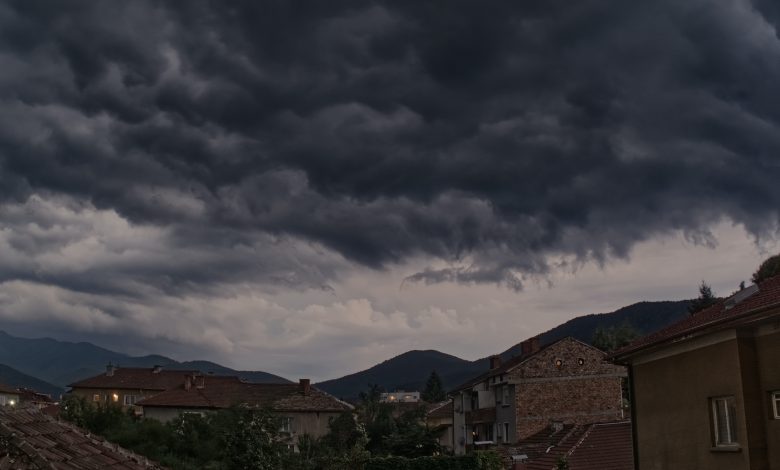How to Prepare Your Homes Exterior for Harsh Weather

With summer coming to an end and winter rapidly approaching, properly preparing the exterior of your home is critical for curb appeal and maintaining the structural integrity of your home and property. Winter weather can be brutal on the exterior of your home, and you may be wondering how to prepare your home to stay safe during this season. The good news is that you won’t have to worry about winter wreaking havoc on the outside of your home with proper maintenance and preparation. Continue reading for seven tips on preparing the exterior of your home for the upcoming winter!
1. Examine the Exterior of Your Home
Do a few laps around your home and yard, noting any areas that appear to be problematic if not addressed before the winter months.
While some of these places may seem like cosmetic improvements, they are critical measures to safeguard your property from harm caused by the next season and to avoid more damage escalating a current problem.
2. Create a Roof Cleaning Schedule
Regular roof power washing is critical to preventing mold, dirt, and mildew buildup on your roof. Maintaining a regular roof cleaning schedule throughout the late summer or autumn months may be ideal since the top must remain dry for a few days after cleaning.
It’s critical to monitor your roof for leaks or cracks since these might allow water to enter your house. Make a note, especially before cleaning your roof, of any areas where extra caution should be exercised to avoid causing additional damage or cracks.
While you may clean your roof yourself, a Richmond Roofing Contractor suggests hiring experts for the best and safest experience. This way, you can avoid damaging your roof—and, more importantly, yourself! Experts know the best procedures and have the necessary equipment, cleaning supplies, and strategies for cleaning and preparing your roof for winter.
3. Fill up the Gap Between the Door and the Window
Conduct a thorough examination of your windows and doors. If you discover a gap in them, fill it in immediately. This should be done using the highest grade of exterior caulk. Silicone caulk is an excellent choice since it does not shrink and retains its form even in the rain.
Depending on the color of your windows, doors, and sliders, you may use plain or colored caulk. Apply with a gun or cartridge. This will assist you in caulking flawlessly and without gaps. Additionally, before applying the caulk, ensure that the surface is clean.
Before installing the new caulk, clean the area with a scrub and warm water to remove any remaining stains from the old caulk or paint. The surface should be completely dry before proceeding. Moisture can significantly diminish the effectiveness of caulking. Experts advise caulking with rubber or silicone before the winter season.
4. Inspect Faucets on the Exterior
Undrained water is a common cause of pipe bursts throughout the winter. This occurs with external faucets or garden faucets. Conduct a thorough search for any remaining water and attempt to drain it entirely. If water is allowed to accumulate, it will freeze in the winter, and as the ice grows, pipes will break, necessitating immediate flood cleaning services.
As a consequence, your home will be inundated with water. This requires that you unhook the hoses. With a few plumbing tools, you can effortlessly open hoses. If you do not have these tools on hand, you may purchase them or hire a plumber to do the work. Additionally, turn off the water valve for outdoor faucets. Additionally, you may replace the faucets with frost-proof faucets for long-term safety.
5. Drain the Irrigation System in the Garden
If precautions are not taken, harsh winter weather may wreak havoc on your garden’s irrigation system. Therefore, ensure that the main supply is turned off. Remember to cover the valves since cold temperatures may severely harm them.
Wrap a plastic bag across the valves and secure it with insulating tape. Additionally, conceal any pipelines that extend above the ground. Insulating foam tubes and adhesives, readily accessible at most hardware shops, are ideal for this.
However, if the system is automated, keep in mind to turn off the control system. As an added precaution, detach the main wires. Finally, thoroughly drain all pipes. If you have any safety concerns, see a professional. Numerous irrigation professionals are already in great demand for winter services these days. Therefore, please schedule an appointment before it is too late.
In summary, the winter season necessitates a significant amount of homework. The outside of the home, compared to the inside, is immediately exposed to snow and rain. As a result, several safety precautions are necessary—several simple methods for safeguarding the outside of your home during the winter.
Read More: Home Roof Repair: Do It Yourself or Hire a Professional?





